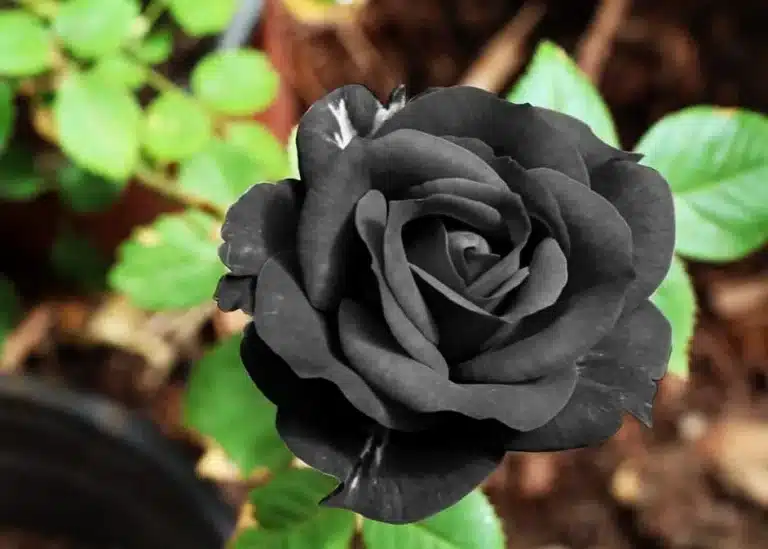Top Reasons to Grow Blanketflower in Your Garden Today
Why You Should Grow Blanketflower: The Ultimate Everlasting Perennial
Bringing Color to Your Garden
Imagine stepping into a garden bursting with vibrant colors that seem to come alive all summer and fall. That’s exactly what blanketflower offers. This incredible perennial not only blooms beautifully but does so repeatedly with minimal effort. Whether you're new to gardening or a seasoned expert, blanketflower can transform your flowerbeds and elevate your gardening experience.
What Makes Blanketflower So Special?
Non-Stop Blooms
One of the standout features of blanketflower is its ability to bloom nearly all season long. Unlike other perennials that may only flourish for a few weeks, blanketflower flowers keep reappearing, providing vibrant bursts of color. Each petal radiates with fiery shades—from warm yellows to deep reds and oranges. This color palette can light up any garden space.
Attracts Pollinators
Beyond aesthetics, blanketflower also serves a crucial role in supporting local ecosystems. It attracts bees, butterflies, and other vital pollinators. By planting this flower, you create a sanctuary not just for your eyes but for these important creatures as well. More pollinators mean healthier plants across your garden.
Versatile in All Spaces
Another appealing aspect of blanketflower is its adaptability. It thrives in various environments, making it suitable for flowerbeds and containers alike. This versatility allows gardeners to create stunning displays in any outdoor setting.
How to Plant and Grow Blanketflower
Choosing the Right Location
To ensure your blanketflower flourishes, select a sunny spot in your garden. These plants thrive on sunlight, requiring at least six to eight hours of full sunlight daily. Insufficient light may lead to leggy growth and fewer blooms.
Preparing the Soil
Blanketflower enjoys loose, well-draining soil. Heavy, soggy soil can lead to root rot, so consider mixing compost or sand to enhance drainage. When digging holes for planting, ensure they are slightly larger than the root ball of your blanketflower.
Spacing Your Plants
If you plan to plant multiple blanketflowers, maintain a distance of 12 to 18 inches between them. This spacing allows adequate airflow, reducing the risk of diseases.
Continuous Blooms Through Deadheading
What is Deadheading?
Deadheading refers to the removal of spent blooms. This simple practice encourages blanketflower to channel its energy into producing new flowers instead of seeds. With regular deadheading, you can enjoy a continuous display of color throughout the season.
How to Deadhead
To deadhead, simply snip off the faded flowers at the base of their stems. This process only takes a few minutes each week but significantly extends the blooming period of your plants.
Watering Your Blanketflower
Watering Guidelines for Success
While blanketflower is drought-tolerant, it still requires proper watering, especially when first planted. Ensure you water deeply every few days during the initial weeks to help establish roots. Once established, shift to a deep but infrequent watering approach—once or twice a week is usually sufficient.
Signs of Overwatering
Monitor your plants closely. Overwatering can result in soggy soil and root rot. Allow the top inch or so of soil to dry out before watering again.
Fertilizing Blanketflower for Optimal Growth
Best Fertilization Practices
Fertilizing blanketflower is not complicated. In early spring, adding compost can provide a natural nutrient boost. For additional support throughout the growing season, consider using a balanced all-purpose fertilizer about once a month.
Avoid Over-Fertilization
Be cautious with nitrogen-heavy fertilizers, as they may promote leaf growth at the expense of flowers. Remember, less is often more when it comes to fertilizing.
Fall Care for Your Blanketflower
Once fall arrives, blanketflower begins to slow its blooming. However, several steps can help your plants finish the season strong.
Continue Deadheading
Keep deadheading until your plants stop producing flowers. This might extend the blooming period into late fall, especially in warmer regions.
Preparing for Winter
After the last blooms, leave some seed heads for winter interest and food for birds. This can also provide seeds for the next growing season. In late fall, cut back your blanketflower to a few inches above the ground.
Advantages of Growing Blanketflower
| Feature | Benefit |
|---|---|
| Continuous blooms | Brightens gardens with color all summer and fall. |
| Attracts pollinators | Supports local ecosystems by bringing in bees and butterflies. |
| Drought-tolerant | Requires less water once established, ideal for busy gardeners. |
| Versatile | Can be grown in beds or containers, flexible for any space. |
Pros and Cons of Blanketflower
| Pros | Cons |
|---|---|
| 1. Bright, eye-catching blooms. | 1. May spread if not managed. |
| 2. Low maintenance once established. | |
| 3. Attracts beneficial pollinators. | |
| 4. Grows in a variety of soils. |
Frequently Asked Questions (FAQ)
1. How often should I water blanketflower?
Water deeply once or twice a week once the plants are established. Ensure the top inch of soil dries out between waterings.
2. Can I grow blanketflower in a pot?
Absolutely! Blanketflower thrives in containers, allowing you to add color to patios or balconies.
3. When should I deadhead my blanketflower?
Deadhead frequently throughout the growing season. Remove spent blooms to encourage more flowers.
4. What type of soil is best for blanketflower?
Loose, well-draining soil is ideal. Avoid heavy, compacted soil that retains too much moisture.
5. Is blanketflower perennial?
Yes, blanketflower is a perennial plant, meaning it returns year after year.
By choosing to grow blanketflower, you're making an excellent decision for your garden. Its vibrant colors, low maintenance needs, and environmental benefits make it a true winner. Embrace this floral gem and watch your garden flourish like never before!



